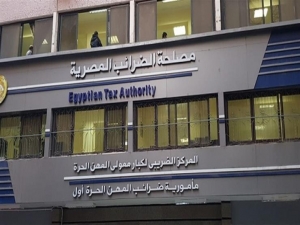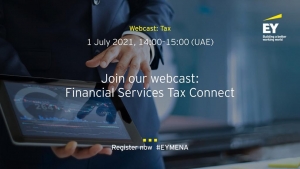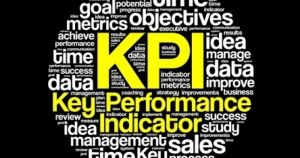عرض العناصر حسب علامة : الضرائب
مسابقة وظائف جديدة.. الضرائب المصرية تعلن حاجتها للتعاقد مع 453 مأمور ضرائب
أعلنت مصلحة الضرائب المصرية بوزارة المالية عن حاجتها للتعاقد مع 416 "مأمور ضرائب فحص - مأمور ضرائب حصر"، بالإضافة إلى 37 مأمور ضرائب حصر وفحص إلكتروني للعمل بالمصلحة، بحسب ما أعلنت وزارة المالية على موقعها الإلكتروني اليوم.
البث الشبكي: ربط ضريبة الخدمات المالية
معلومات إضافية
- البلد عالمي
- نوع الفعالية مجانا
- بداية الفعالية الخميس, 01 يوليو 2021
- نهاية الفعالية الخميس, 01 يوليو 2021
- التخصص ضرائب
- مكان الفعالية أونلاين
انتهاء المهلة الثالثة والأخيرة لقانون التجاوز عن مقابل التأخير والضريبة الإضافية بنسبة 50% في 12 فبراير 2021.
مد أجل تقديم إقرارات ضريبة المرتبات حتى نهاية فبراير ٢٠٢١
فتح الصندوق الأسود للذكاء الاصطناعي
معلومات إضافية
-
المحتوى بالإنجليزية
AI, applied: Opening the black box
By Ranica Arrowsmith
There’s a phrase for the uneasiness many of us feel when confronted with humanlike machines — the Uncanny Valley. Coined in the 1970s by Tokyo robotics professor Masahiro Mori, the phrase describes how as machines appear more humanlike, they become more appealing to humans — but only up to a point. After that, as they appear more humanlike but not quite, they inspire revulsion in the observer.
In the accounting profession, there is a similar uneasiness when dealing with the idea of AI, though it has nothing to with how the software looks. The technology has the potential for high-level automation of processes, ultimately saving a lot of time for the accountant, but with its ability to perform tasks that are traditionally the purview of human beings, does this mean a diminished role for the accountant, or even the loss of jobs?
The good news is, the experts don’t think so.
Justin Adams, whose company Anduin has just launched an AI-enabled accounts receivable platform, insists there is an “art” to billing that must remain in the AR process for it to be meaningful and profitable — the deep knowledge of a client over time, for example, can affect a billing relationship. And Samantha Bowling of Garbelman Winslow CPAs isn’t interested in simply speeding up the audit with AI — she wants to provide an audit of such high quality that it’s unquestionable. These types of service goals can only be achieved by marrying AI with the human professional, with all the professional’s experience, skepticism and emotional intelligence.
Artificial intelligence can have an air of mystery about it, to say nothing of a hint of the unnatural, with something we value as inherently human — intelligence — being created and inserted into something inanimate — a machine.
It makes sense that we feel this way. The programming precursor to what we today call artificial intelligence was neural networks, code that was inspired by and modeled on actual human neural networks in the brain. Today, artificially intelligent programs have the ability to observe patterns and use those to “learn” behaviors and responses, making the technology smarter and more usable over time.
It’s worth bearing in mind the various ways in which AI is already here, working in the background of the accounting and enterprise platforms you know well, automating processes and making software more efficient. All the user sees are the benefits. But the market is now seeing true AI platforms that apply machine learning to entire processes end to end, such as AR/AP. And the common theme among all use cases for such AI-rich platforms is time — the time it takes to adopt the software and to validate it, to train it enough for a firm to realize its benefits. The machine has to learn. This takes an investment both of money and patience, but for the willing, it’s worth it.
Today, artificial intelligence is transforming processes across the accounting profession, for those are ready to invest in and adopt it. It’s not just being practically applied in audit, where AI is being used for data analysis and anomaly detection — we will look at examples of AI transforming AR/AP, as well as explore the implications of AI in sales tax automation.
Accounts: Receivable
Despite … everything about this year, venture capital funding continued on an upward trend in 2020, with the third fiscal quarter bringing in the second highest amount of VC funding per quarter on record. Artificial intelligence is high on the list of hot tech, which makes it no surprise that Anduin was able to obtain seed funding and launch its first AI-powered product suite all during the COVID-19 pandemic.
Anduin co-founders Justin Adams and Pat Morrell have built an AI-driven accounts receivable platform, Intelligence-Based Billing, for accounting firms. The platform launched in December, so it remains to be seen how successful adoption will be, but the pair of entrepreneurs have succeeded before in the AI space. Prior to founding Anduin, Adams and Morrell started, grew and sold a company that made an AI-driven product for the health care space, all within two years. That whirlwind experience propelled them into their current venture, and their success made them attractive prospects for investors.
“We had zero health care background when we started Digitize.AI,” Morrell said. “But we went to CFOs of health care companies and asked them where their biggest pain point was. When they said ‘prior authorizations,’ I had to look it up on Wikipedia — but I knew that a manual process is a manual process, and can be automated.”
Adams and Morrell weren’t quite as clueless entering the accounting space. Adams had spent years working at Big Four firm PwC, first in a consultative capacity and then internally managing technology projects. When they asked accountants what they would change if they could wave a magic wand, accounts receivable was a common answer. The process, managed manually, is scattered and unwieldy, and even streamlined client portals don’t optimize the process for each individual client and their payment habits.
There’s an art to billing, Adams said, and the platform tries to preserve that for the accountant. “Think of it from a client’s perspective,” he said. “There’s tons of friction. It can be confusing. You could have received a service three months earlier, and when you get the invoice, you’re trying to remember what you’re paying for again.”
Intelligence-Based Billing is made up of four modules (which can be bought separately), handling invoicing, collection, payments and internal analytics. The platform automates the invoicing process so bills are sent in a timely manner, but it also learns a client’s payment habits over time. How many emails or messages does it take before an invoice is opened and viewed? How many contacts does it take before a client pays the bill? Each client is different, and therein lies the art. If a client typically pays an invoice after two emails and a phone call, Intelligence-Based Billing will “remember” that over time, optimizing the process for each firm-client relationship.
More “art” that the AI tries to replicate: The analytics feature can be used in part to automate, so to speak, that gut feeling accountants also have to pay attention to when it comes to value-based billing. For instance, Morrell pointed out, a firm may have worked a certain number of hours on a project, but with their sense of the market over the years, they know that a client might expect a certain discount. Each client perceives different aspects of a service as more valuable, and also might need different billing structures to remain a client in the long term. Intelligence-Based Billing pulls and analyzes data from across firm systems to inform this type of decision-making.
“The fundamental pain is the anxiety that firms are leaving money on the table; and that firms don’t have real visibility into their cash flows,” Morrell said. “On the partner level, it’s all about liberating them to focus on complex, creative, value-generating service delivery.”
Intelligence-Based Billing is new on the market, and is signing up “trailblazer firms” now as its first customers. Time will tell how successful it will be, but no matter what, Anduin is part of a small group of innovators bringing fully formed, AI-enabled automation to firms of all sizes, for everyday firm functions, and will help set the stage for what’s to come.
Accounts: Payable
Youngseung Kuk manages business outsourcing services for Top 100 Firm Armanino in Boise, Idaho. This year, Kuk spearheaded the implementation of Vic.ai, a platform that automates the accounts payable process using AI. Using AI to tackle AP for clients was “low-hanging fruit,” Kuk said, as all companies, no matter what type, have bills to pay.
Armanino uses Bill.com firmwide for all AP, so the firm worked with Vic.ai to integrate the software to make the end-to-end AP process more streamlined.
Kuk and his team are validating Vic.ai as they use it, adding clients slowly, one at a time, to make sure they give the program enough time to learn its clients and become highly efficient at its predictions. This is a key part of understanding AI — it takes time.
Software that runs on AI doesn’t operate like the software we’ve become accustomed to. It doesn’t perform an exact set of functions as programmed, and only as programmed. Artificial intelligence learns as it goes, which means that by the end of a certain period of time, the software will operate very differently for each client, each firm, each project.
Kuk estimates it will take Vic.ai three years to predict client behavior and needs at a close-to-perfect rate. The wait is worth it for the sheer amount of time it can give back to an accountant once the AP process for a client is basically fully automated.
Armanino has one client, a law firm, that has highly repetitive bills that don’t have too many complicated dimensions (i.e., company name, address, and so on, are usually in the same spot on the invoices). Within a few months of use, Vic.ai can now predict any given AP workflow for that client with about 80 percent accuracy. If this is true for this client, Kuk said, that’s enough to know it’s possible for the others. Currently, Armanino has 46 clients on Vic.ai, and plans to keep validating the software so it can add more in time.
“The time spent validating is worth it, because by the end, as a firm, we’re going to be so much more scalable,” Kuk said. “Once you free up some capacity, even just from an AP standpoint we can do a number of different things for our clients that add more value, like confirming all vendors have W-9s, for example, or reaching out to vendors proactively if they haven’t accepted an ACH payment. These are just some basic examples, but I think we’re at the tip of the iceberg and nowhere near the full potential of AI.”
“Two years ago, we made an investment in artificial intelligence in a big way. It became part of firmwide strategy,” explained Tom Mescall, partner-in-charge of consulting at the firm. “Most CEOs, CFOs and business operators know the headline of AI, but they don’t know how to apply it in a business setting. We’ve done a lot of work around demystifying AI and bringing real-world examples to light for clients.”
A relevant audit
Firms have been using AI products for anomaly detection and analytics in audit for a few years now. Companies like MindBridge AI came on the scene and started to show the profession the real-world implications of being able to read every piece of data in minutes, as opposed to just sampling data. Samantha Bowling, a partner at Garbelman Winslow CPAs, saw the opportunity in MindBridge AI three years ago, and brought the technology to her firm.
In 2017, while Bowling served on the Governing Council for the American Institute of CPAs, she listened to president and CEO Barry Melancon describe how Big Four firm KPMG was investing millions of dollars into AI-driven audit technology.
“He was talking about how they were going to take over the world,” Bowling recalled. “As a small-firm audit partner, I was concerned, because if the big firms are doing something, sometimes it doesn’t become available to us for a while, or ever. I was actually concerned about eventually having to find a new revenue source.”
She called her existing audit software provider and asked explicitly if they had plans to embed AI into their platform. They didn’t. So Bowling did some online research and found MindBridge AI.
Bowling says that Garbelman Winslow is still in the adoption phase of MindBridge. As is true with the other technologies featured here, there is no substitute for time to allow an artificial intelligence platform to live up to its true potential. She started by engaging MindBridge for just one audit, and then grew usage from there. It helped when MindBridge integrated with QuickBooks, which made data transfers easier.
The biggest benefit of applying artificial intelligence to audit, for Bowling, is the risk analysis.
“Now that there is a direct link between QuickBooks Online and MindBridge, it automatically connects and does the risk analysis,” Bowling said. “I used to think MindBridge was an audit stamping tool that looked at transactions and identified anomalies, directing our attention and telling us where to look. But I realized it’s actually a great risk assessment tool in the very beginning of an audit.”
Bowling explained that while audits are based in risk assessment, a lot of the time, auditors have no idea where the risk is. “We only have our professional skepticism — there’s no one to tell us the risk is in revenue or payroll,” she said. “Now we have something that tells us where it is at the outset. Audit assertions are built into it.”
But there is friction in adoption. Not every client is easy to work with in MindBridge. There is still a lot of manual work to be done to transfer data that is not in the cloud, for instance, to MindBridge AI’s platform.
“Everyone just wants it to be an easy thing — to upload the general ledger and get going — but I think they’d be remiss not to do this with at least one client, or start with their cloud-based clients first before going to challenging clients,” Bowling said. “People are looking for faster, better ways, but I went into this not to do a faster audit but a relevant audit.”
Bowling received CPA.com’s Innovative Practitioner Award in 2018 for her work bringing AI to Garbelman Winslow CPAs. She won in part for the fact that it is small business and nonprofit clients to which she is bringing AI-enabled services, which also has the side benefit of Bowling being able to pass the cost of using MindBridge to her clients by folding it into the billing package. Nonprofit clients don’t mind paying top dollar for service that guarantees an accurate risk assessment.
“Nonprofit clients don’t care about us passing the fee onto them to minimize risk as much as we do, because nonprofit board members are just worried about someone doing something wrong with the money and it being in the newspaper,” Bowling said. “So they’re happy to have a very good audit done, and pay for it.”
Every transaction in the world
When thinking about the application for artificial intelligence in tax, often we think about tax preparation, since there is a lot of room to automate it. In fact, Samantha Bowling said that if she could apply AI to any other service area at her firm, it would be tax: “The current process, with a mix of paper documents and e-returns, is asinine,” she said. “I can’t wait till the whole process is 100 percent automated.”
AI-related innovation in tax prep is moving slowly, although the Internal Revenue Service has started to use the technology in different capacities to detect tax evasion and other types of noncompliance. But of course, there are other areas of tax that are ripe for disruption with AI, and sales tax automation is one.
One of the companies working in this area, Avalara, has made investments in AI in recent years, one of which was acquiring Indix in 2019. Indix was based on an idea that founder Sanjay Parthasarathy had for creating a comprehensive index of retail product information online using artificial intelligence to aggregate the data. (The aggregator was built in layers, with a Google web crawler grabbing information from all over the internet, and then various smart algorithms working together to curate and organize that data.)
Brands and retailers could buy access to this database of information on mostly retail, but also some business-to-business, products, to enrich their catalogs, benchmark against competitors, and so on. Basically, Indix was built as a neutral aggregator of e-commerce inventory.
And now, Avalara owns that AI-built index of more than 4 billion products. This means that Avalara can fold categorization data for much of the world’s online inventory of products in with its tax content database, which includes international product codes and classifications; taxability rules; exemption conditions; tax holidays; jurisdictions; boundaries; tax rates; thresholds and registration, compliance, and return preparation and filing requirements.
If this list sounds daunting, that’s kind of the point: Avalara’s mission is to “to be a part of every transaction in the world.” Without AI enabling at least some of this technology, this would be an impossible goal.
“When you buy a tax compliance product or suite, you want to be able to start using it tomorrow,” said Parthasarathy, who now serves as chief product officer for Avalara. “However, you know that before you can use an automated system, you have to make sure the tax nexus is right, the catalog is mapped to the tax code, a set of things that take time and research. If you want to start selling internationally, and you therefore need to start using harmonized tax codes — if it’s going to take nine months to do it, that’s lost value. We can get you going right away.”
Before Parthasarathy founded Indix, he spent almost two decades at Microsoft. He ended his career there in 2009 as corporate vice president of the Startup Business Accelerator program, a program he created; and he was director of Bill Gates’ 1997 trip to India, which led to a significant investment in that country by the software giant.
When talking about historical AI, Parthasarathy will sometimes use the term neural networks, which are indeed the statistical model programs ancestor to what we call AI today. His knowledge of AI is deep and historical, from having spent so many years helping build one of the most innovative companies in recent history. From his vantage point, he sees both the immense possibilities of AI, as well as the risks.
“There are risks in tax — compliance has potential penalties if done incorrectly,” he commented. “You’re doing it on behalf of somebody, so you want to make sure it is accurate and appropriate. You probably want actual people to keep an eye on it, rather than let AI run everything, even if one day it can. There is an ethical risk — when you have all this data, what is the responsibility of the government and companies to treat it as private data?”
كيف يمكن للتكنولوجيا المالية أن تساعد المحاسبة في تقديم بيانات استثمار موثوقة وفي الوقت المناسب؟
معلومات إضافية
-
المحتوى بالإنجليزية
How fintech can help accounting deliver timely, trustworthy investment data
By Ted Meissner
Opportunities don’t stick around long, especially in the fast-moving financial world. When you’re managing a large, diverse portfolio, you need to respond quickly when opportunities arise, and you need up-to-the-minute data to act with any confidence. But accounting and investment pros can’t audit sources and verify data quickly enough to ensure the information is both updated and accurate. Without insight into the source and age of data and fresh analytics, they’re operating at a huge disadvantage.
There are several reasons why reliable data is so hard to come by. The need to reconcile information from multiple sources is a big part of the problem. Data is often siloed throughout the organization, and input from numerous departments is anything but consistent. When managers must sort through stale data, updates, revisions and inconsistencies, it’s difficult to trust the information. They’re not alone in their frustration. The concern extends up to the C suite, where the chief financial and operations officers (CFOs and COOs) and chief information officer (CIO) are looking for solid data to support sound decisions and satisfy investment committees.
Fortunately, fintech can help address this problem. State-of-the-art accounting solutions provide full transparency on the quality of the data, revisions, corrections and approvals. That results in trustworthy data — the foundation for smart, fast, strategic decisions.
Data is inconsistent and inaccessible
With a manual process, it’s difficult to ensure data consistency and availability. Multi-asset data comes from a number of sources, including fund managers and accountants, sometimes including outside contractors. Often, they use different formats and timetables, which can make it hard to collate data. Handling data collection manually is a slow, tedious process full of duplication and prone to human error. Once the information has been gathered, someone has to take the time to reconcile the results into something that makes sense.
That’s easier said than done. When staff members handling different functions import and rekey details into a variety of applications, data can be stuck in those apps and siloed in those departments. Many individuals and departments maintain separate spreadsheets for their own purposes and don’t share all the information across the organization.
Given these obstacles, it’s easy to understand why it’s hard to get accurate data that is up to date, consistent across the organization and ultimately reliable.
Productivity suffers
It’s not unusual for accountants to handle all non-investment functions in an investment firm, including tax and compliance functions as well as accounting. In addition, they’re often assigned responsibility for performance reporting and contribution/attribution analysis. That’s all well within their capability, but it’s hard to accomplish using substandard tools such as spreadsheets.
The situation gets even more complicated when the work isn’t handled in-house but outsourced to outside accounting firms. When debits and credits are booked externally, there can be a lack of detailed audit trails for internal accountants to follow. Additional problems can arise when third parties don’t know what form the data should take. Companies are unhappy when data isn’t ready when needed or is difficult to reconcile.
Shadow systems add to the complexity. These workarounds often require companies to redo the work they’re paying an outside vendor to deliver. That extra step may provide more confidence in data, but it’s expensive and inefficient, and it can wind up creating yet another data silo.
Faced with these realities, accountants can feel they’re unable to provide their best work despite their best efforts. Spending hours on routine tasks such as rekeying data into diverse systems rather than doing productive value-added work is a waste of their time and talent, leading to job frustration.
Technology is the answer
Automation can resolve many of these problems. Fintech software providers offer next-generation solutions that ingest data, record it once and distribute it to the appropriate systems for portfolio accounting, performance reports and analyses, and private investment tracking. Indexing provides both an audit trail and insight into data quality, and algorithms can be used to analyze key indicators and assign data a confidence rating.
The investment industry now has the tools to solve the longstanding problems it has had with data. By harnessing technology, firms can enjoy more control and enhanced efficiency and have more confidence in the integrity of their data. In the end, this will give them more time to manage portfolios and deliver even more valuable service to their clients.
نجاح خطط التعافي المستدام
معلومات إضافية
-
المحتوى بالإنجليزية
Can we warm a cooling economy by cooling a warming planet?
By Gianluca Di Pasquale
EY Global Green Economies & Infrastructure Leader and Future Cities Co-Leader
Across the world, the COVID-19 pandemic has devasted lives and livelihoods, with the necessary lockdowns causing the deepest economic downturn since the Great Depression.
Governments have been forced to address a dual challenge: unprecedented demand for financial support and public services, coupled with dwindling tax revenues from economic activity. The amount of economic stimulus globally has exceeded US$12t. And in many countries, public debt, already high following the Global Financial Crisis (GFC), is now at historic levels.
The global pandemic brings with it a chance for radical change
The immediate tasks of governments are to address the health care crisis and restore economic growth.
In this context, the aims of the Paris Agreement – to keep the rise in global temperature to below 2% and pursue efforts to keep it to 1.5% – may appear an unnecessary distraction. But as the recent US wildfires and other extreme weather events around the world vividly demonstrate, the devastating impacts of climate change can’t be ignored.
While the economic slowdown caused daily global greenhouse gas emissions to fall 17%¹ by early April, compared with last year’s average, they’re quickly rising again as economies reopen. The world can ill-afford to achieve much-needed economic growth by resuming the polluting ways of the past. Instead, we must see the pandemic as a one-off opportunity to bring radical change – and make sure the economic recovery is sustainable.
Moving to a low-carbon economy will produce jobs and prevent human harm
Even before the pandemic, the World Bank estimated that a transition to low-carbon, resilient economies could create 65m new jobs by 2030.
What’s more, without urgent action, climate change could push a further 100m people into poverty by 2030, and displace 143m in just three regions.² Yet, according to Bloomberg New Energy Finance, as of July 2020, the top 50 economies had dedicated only around 5% of their national stimulus packages to sustainability initiatives.
Preparing for the future includes avoiding the mistakes of the past
The GFC was a different kind of crisis, but governments can still learn from its lessons.
Related article
Will the road to recovery lead to an economy that's revived or reimagined?
Will the road to recovery lead to an economy that's revived…
In the wake of COVID-19, governments and companies have an opportunity t…
19 Jun 2020 Jan Bellens
The proportion of stimulus governments are earmarking for sustainability measures is much lower today than after the GFC. Yet even that response failed to address the climate crisis – and the recovery led to more carbon emissions, not fewer.
Of course, much of the initial stimulus spending during the current crisis has focused on providing short-term relief on a scale not seen during the GFC. Predominantly, it’s gone on protecting employment and preventing insolvencies.
https://www.ey.com/en_ae/government-public-sector/can-we-warm-a-cooling-economy-by-cooling-a-warming-planet
مؤشرات الأداء الرئيسية لأصحاب شركات المحاسبة
دراسة ماجستير: دور المدقق الخارجي في التكليف الضريبي في سوريا
يعتبر الإصلاح الضريبي في سوريا من أهم ما تسعى إليه وزارة المالية ويتمحور هذا الإصلاح حول عدد من النقاط أهمها التقليل من التراكمات الضريبية والوصول إلى علاقة جيدة بالمكلفين وتحديد الضريبة بشكل عادل ولا شك في أن تقدير الربح الخاضع للضريبة هو من أعقد جوانب العمل الضريبي لأن الوصول إلى التقدير حقيقي لوعاء الضريبة يعد شرطاً لازما لتحقيق مصلحة كل من المكلف والإدارة الضريبية ولتحقيق ذلك فإن التشريعات الحديثة أولت المدقق الخارجي مسؤولية إعداد واعتماد البيان الضريبي










